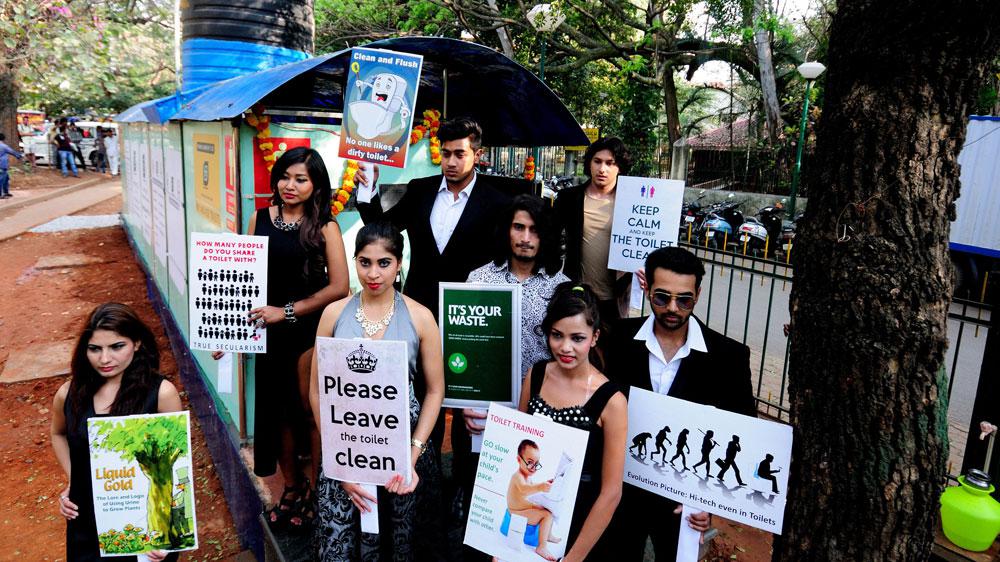
According to the UN, around 595 million people, or nearly half of India's population, defecates(排便) in the open.
In his first Independence Day address on August 15, 2014, India's Prime Minister Narendra Modi made the building of toilets in rural India, one of his government's major priorities.
A year later the Indian government claims that their "Clean India" campaign has achieved the target of ensuring separate toilets for boys and girls in all schools across the country. They also claimed to have constructed around 800,000 toilets in rural India.
But according to some reports in local media, while the toilets may be getting built, many villagers have refused to change thir habits, and toilets are lying empty.
In India it was suggested that Indians don't defecate near human habitation. It was also suggested that one should go at a distance, dig a small pit, put some grass and leaves in it and then defecate. This practice of defecation in the open is still prevalent in India, especially in the rural areas, in urban slums and at places of religious gatherings.
In earlier days, the villages had trees, bushes where one could take cover while defecating. Therefore, it has cultural legacy; besides while many people do not have adequate money to build the toilets, in some cases no place is available to build the toilets.
As the target set out by the prime minister to build toilet in all the houses by 2019, I hope by that year every house will have a toilet.
本时文内容由奇速英语国际教育研究院原创编写,禁止复制和任何商业用途,版权所有,侵权必究!
1.Where does the story happen?
A In India.
B In Iraq.
C In Cuba.
D In Russia.
解析:选A。细节理解题。根据第一段的第一句“According to the UN, around 595 million people, or nearly half of India's population, defecates in the open”可知。
2.What does the passage mainly talk about?
A Culture.
B Toilets.
C Government.
D Population.
解析:选B。主旨大意题。 通读全文可知,整篇文章在谈论印度人的排便习惯和厕所问题。
3.How many toilets does the government want to build in rural India?
A 300000.
B 500000.
C 800000.
D 900000.
解析:选C。细节理解题。根据第三段的第二句“They also claimed to have constructed around 800,000 toilets in rural India.”可知。
4.Why do people refuse to use the toilet?
A Because the toilet is very dirty.
B Because people refuse to change their habits.
C Because they don’t have much money.
D Because people think it is a shame to use the toilet.
解析:选B。细节理解题。根据第四段“while the toilets may be getting built, many villagers have refused to change thir habits, and toilets are lying empty,”可知。
5.Where can you see the passage?
A In a story book.
B In a fashion book.
C In a news website.
D In a science magazine.
解析:选C。题材理解题。通过排除法,我们可以得知这篇文章有可能摘自新闻报道。
6.Where can you see the passage?
A In a story book.
B In a fashion book.
C In a news website.
D In a science magazine.
解析:选C。C 题材理解题。通过排除法,我们可以得知这篇文章有可能摘自新闻报道。